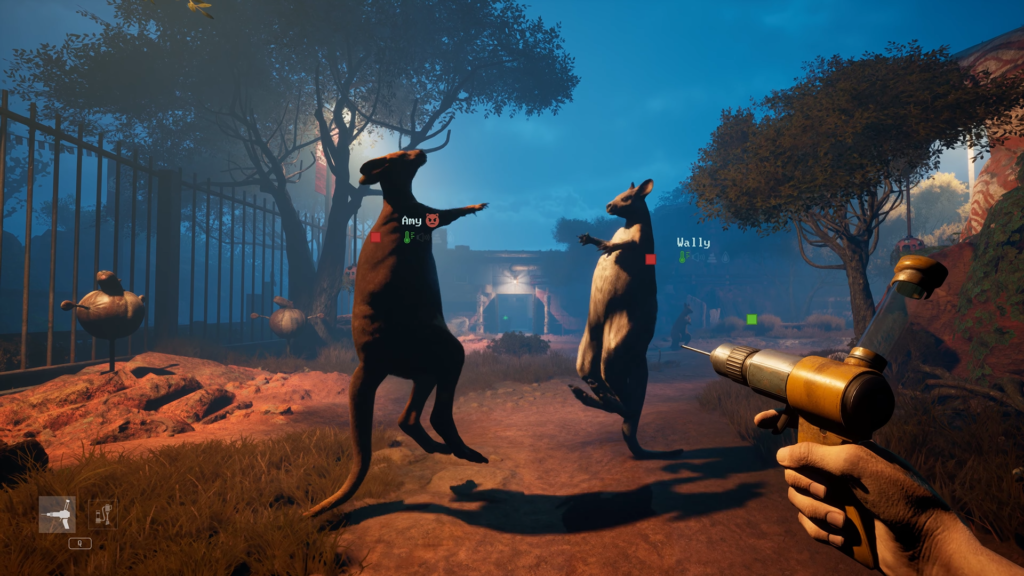Zoochosis Steam Key Free Download
You can download the Zoochosis steam key for free to download Zoochosis on your PC. All you need to do is follow our tutorial till the end to grab the game with ease. Clapperheads is the developed and published the Zoochosis. As of now, the game has got lots of positive responses, therefore it is worth trying this amazing game. Currently it is priced for 22 dollars, however you can get the key for free from here.

Tap on the button given above to access the online zoochosis steam key generator and then download your key from here. You can grab the key in matter of seconds, if you do everything as instructed here. As you know, you can use this key to activate the Zoochosis through the steam client. If you have any doubts regarding this tutorial, feel free to contact us.

Zoochosis Review
The highly anticipated game Zoochosis has finally made its debut, and it brings players into the disturbing world of animal captivity gone awry. This game places a spotlight on the psychological impacts of confinement on zoo animals, blending strategy, simulation, and psychological horror.
Zoochosis introduces players to a zoo management simulation with a dark twist. Unlike traditional zoo sims, where the primary goal is to maximize profit, ensure visitor satisfaction, and maintain a collection of healthy animals, this game forces players to confront the harsh realities of captivity. The twist lies in the need to balance running a successful zoo while addressing the mental degradation of the animals in your care.
The core gameplay of Zoochosis offers familiar mechanics to anyone experienced with simulation and management games. As the head of the zoo, you’re responsible for creating enclosures, managing the zoo’s finances, hiring staff, and catering to visitors. However, these basic functions serve only as a foundation for the more unsettling aspects of the game.
The challenge comes when animals in your zoo begin to show signs of mental distress. Instead of simple “happiness” or “satisfaction” meters, animals in Zoochosis exhibit complex psychological states. If they’re left unattended, they can become aggressive, lethargic, or even dangerously erratic, leading to chaotic situations within your zoo.
Animal enrichment plays a key role in managing mental health. Providing proper stimuli, adjusting enclosure sizes, and introducing environmental enrichment techniques are crucial in preventing zoochosis, the titular syndrome affecting animals in captivity. The simulation depth here is impressive, with each species requiring unique care. However, managing the zoo’s financial constraints while trying to address every animal’s needs becomes a delicate balancing act.
What sets Zoochosis apart from other simulation games is the psychological horror that emerges from witnessing your animals’ descent into madness. Over time, signs of zoochosis manifest in increasingly disturbing ways. Animals start exhibiting abnormal behaviors: pacing in tight circles, self-mutilation, and attacking other animals or even zoo visitors. The visual and auditory cues—such as eerie animations and unsettling sounds—are meticulously designed to evoke discomfort and guilt in the player.
These moments of tension are compounded by the fact that the player is largely responsible for these breakdowns. The game continuously pushes players to confront their choices—should they prioritize profits, visitor satisfaction, or the well-being of the animals? As animals deteriorate mentally, players are faced with difficult moral decisions, such as whether to euthanize an animal, invest in expensive rehabilitative care, or simply let it spiral out of control for the sake of the zoo’s financial stability.
The narrative structure of Zoochosis is both subtle and powerful. It doesn’t deliver a traditional storyline but instead builds a narrative around player decisions and the natural progression of the zoo. At key points, players are introduced to moral dilemmas that can dramatically alter the course of the game. These dilemmas force players to question their role in the ethical treatment of animals and their responsibilities as a zoo operator.
The gradual shift from a well-functioning zoo to a place of horror is expertly paced. The game introduces new challenges in subtle ways, escalating the pressure on the player while exposing them to increasingly uncomfortable choices. There’s no explicit villain, but the true antagonist is the system of captivity itself, and the players, by extension, are complicit.
As the game progresses, the player’s decisions lead to different outcomes, and multiple endings can be reached depending on how the player handles the various crises that arise. The replayability factor is strong, as each playthrough can result in vastly different experiences based on your moral compass and management strategy.
Visually, Zoochosis leans into a realistic art style with an unsettling edge. At first glance, the animals and environments are beautifully rendered. The enclosures, vegetation, and animals are all lifelike and vibrant, giving the impression of a wholesome zoo simulator. However, as the game progresses, the visuals take on a more twisted form.
As the animals fall deeper into mental decline, their appearance subtly changes—fur becomes matted, eyes look hollow, and movements become erratic. The game’s transition from peaceful to horrifying is gradual but effective, using its art direction to reflect the psychological state of the animals.
The user interface is functional and clean, though it becomes cluttered as the zoo grows larger. Keeping track of multiple crises can be overwhelming, but this is likely intentional, adding to the sense of unease.
Sound is another strong point in Zoochosis. The ambient noises in the zoo are calming at first—birds chirping, animals roaring, and the chatter of visitors—but as things start to unravel, the sounds shift. Animal cries become distorted, and the once pleasant music becomes eerie and unsettling. When an animal experiences a mental breakdown, the sound cues amplify the horror, with screeching, unnatural noises that heighten the tension.
The use of sound as a narrative tool is particularly effective in creating an oppressive atmosphere. The juxtaposition of cheerful zoo sounds with the increasingly horrifying soundscape creates a dissonance that keeps players on edge.
The game offers a challenging AI that dynamically reacts to the player’s decisions. The animals’ behaviors evolve based on their environment, and visitors respond to both the aesthetics of the zoo and the welfare of the animals. Managing public relations becomes crucial when animals exhibit disturbing behavior, as visitors will react negatively, affecting the zoo’s reputation.
The difficulty curve is steep. As more animals are introduced, managing their mental health while keeping the zoo operational becomes increasingly difficult. The game doesn’t shy away from overwhelming players with crises, and this sense of helplessness is central to the experience. For some, the difficulty may feel punishing, but for those looking for a complex and thought-provoking challenge, it’s a perfect fit.
Zoochosis is not for the faint of heart. Its blend of zoo management simulation and psychological horror offers a unique experience that explores the darker side of animal captivity. The game’s moral dilemmas and psychological tension create a thought-provoking narrative that challenges players to reflect on the ethics of zoos.
While the difficulty can be overwhelming and the gameplay may be too disturbing for some, Zoochosis succeeds in delivering a haunting, memorable experience. It stands out in a crowded genre by daring to confront uncomfortable truths about animal welfare, making it a game that will stay with players long after they’ve finished.
In conclusion, Zoochosis is a bold, unsettling, and thought-provoking game that pushes the boundaries of the simulation genre. It’s a must-play for those seeking a deeply emotional and challenging experience, but players should be prepared for the psychological weight that comes with it.


